Watermelon is one of my favorite fruits. There’s nothing better than biting into that crisp, sweet, juicy melon in the middle of summer. If you too love watermelons, then growing them is a no-brainer.
However, watermelon plants can sometimes run into growing problems. And if your watermelon plant is dying, you’ll want to fix the problem as quickly as possible. So in this article, let’s take a look at common reasons why watermelons can die, and what to do about them.
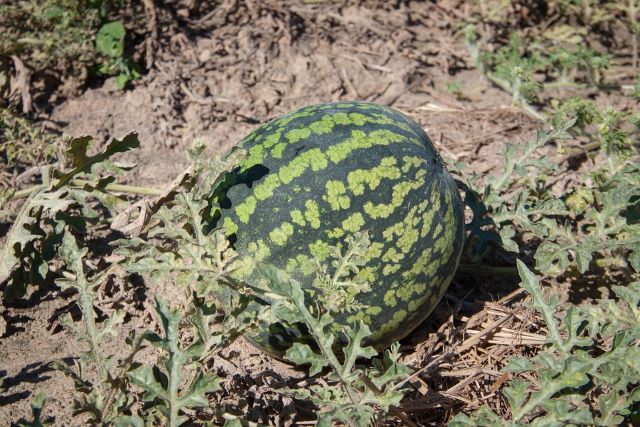
The most common reasons for watermelon plants dying include incorrect soil, watering issues, not enough sunlight, or planting issues. Temperature, weeds, diseases, and pests can also play a role.
Table of Contents
- Incorrect Soil Can Cause Watermelon Plants to Die
- Watering Issues Can Cause Watermelon Plants to Die
- Not Enough Sunlight Causes Watermelons to Die
- Planting Problems Can Cause Dying Watermelon Plants
- The Wrong Temperature for Growing Watermelons Can Cause Dying Plants
- Too Many Weeds Can Kill Watermelon Plants
- Watermelon Diseases Can Cause Dying Plants
- Pests Can Cause Watermelon Plants to Die
- Final Thoughts
Incorrect Soil Can Cause Watermelon Plants to Die
Watermelons need loose soil with lots of organic matter. If the soil is too dense or rocky, it can constrict the watermelon plants and lead to growing problems. When planting watermelons, make sure the soil is light and loose.
Adding a lot of organic matter, like compost, to soil serves two purposes. First, it will help make it looser. And second, it will provide a lot of the nutrients that watermelons need to thrive. So don’t forget to provide plenty of compost for your delicious watermelons.
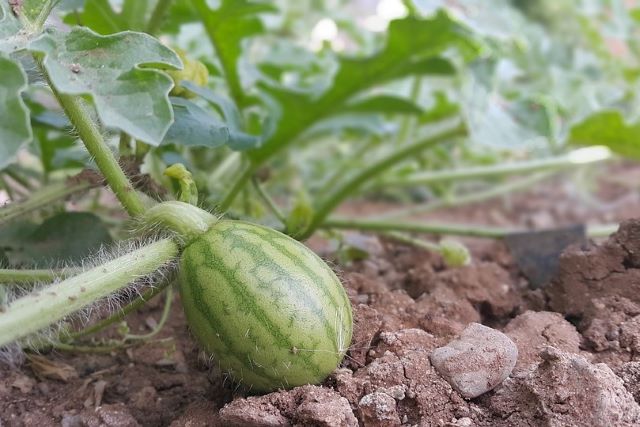
Watering Issues Can Cause Watermelon Plants to Die
Watermelon plants thrive in hotter weather (more on that later). Because of this, they need a lot of water to support their growth and keep them as healthy as possible.
Often, watermelons need one to two inches of water every week. This will change, though, based on your climate and the weather. If it rains a lot, you obviously don’t have to water them as much.
However, never let the soil dry out completely. Watermelons thrive in soil that is consistently moist. Not soggy, but moist. If the soil is always soggy, there’s too much water sitting in it, it can lead to root rot and other problems.
So try to keep the soil moist, and if it starts getting too dry, give it a good watering. Remember, watermelons are more than 90% water — so they need a lot of it to grow properly!
Not Enough Sunlight Causes Watermelons to Die
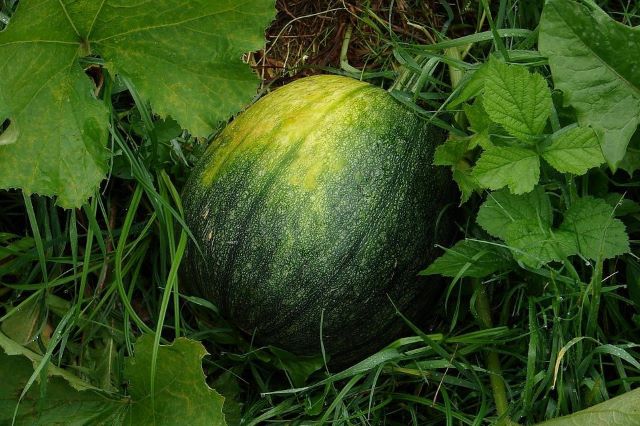
These wonderful watermelons absolutely adore sunlight. They need full sun, meaning at least six to eight hours of direct sunlight every day. If they don’t get this, they’ll run into growing problems.
So when you plant your watermelons, choose a bright, sunny location that gets full sun throughout the day. Don’t plant them near the corner of a building, or near other plants or trees that could block their sunlight.
If your watermelons are starting to die and they’re not in a sunny location, see if you can move them somewhere brighter. Or, alternatively, clear away whatever’s blocking the sunlight from your plants.
Planting Problems Can Cause Dying Watermelon Plants
There are two very important things to consider when planting watermelons: spacing and time when you plant. If you get either of these wrong, it can cause problems for the plant later on.
First, spacing. Watermelon plants are big, and their vines often spread over a large area. They should be planted in hills that are at least three to six feet apart, depending on how wide your variety spreads. Within each hill, the plants should be roughly a foot apart. If watermelon plants are closer together, they can fight with each other for space both above and below the soil.
Second, the time when you plant. Watermelon plants usually need at least 100 days of warm weather to fully mature fruit and be ready for harvest. So ideally, you would plant them 100 days before when you want to harvest in mid-late summer.
However, some climates don’t have a growing season this long. In those cases, it can be a good idea to start your watermelon seedlings indoors two to four weeks before transplanting them outside.
This gives the watermelon plants time to get started on the growing season even if the conditions outside aren’t right. If you do this, consider starting them in biodegradable containers, as it will make transplanting much easier
The Wrong Temperature for Growing Watermelons Can Cause Dying Plants
Watermelons love heat and warm climates. They grow the biggest and juiciest when they have a lot of very warm days with lots of sun and water.
The ideal temperature range for watermelons is from 65-95 °F (18-35 °C), with temperatures being more near the high end later in the season. If temperatures drop below 65 °F (18 °C), or consistently go above 95 °F (35 °C), it can cause growth problems for your watermelon plants.
As a rule of thumb, you should plant watermelons when the soil temperature is between 70-80 °F (20-26 °C). Again, if this is too late in the season for you, you can always start watermelon plants indoors before transplanting them outside.
Too Many Weeds Can Kill Watermelon Plants
Weeds can take necessary nutrients away from watermelon plants, as well as fight for root space beneath the soil. So it’s important to remove weeds from around watermelon plants and prevent them as much as possible.
Taller weeds can also block sunlight from reaching your watermelons. Plus, they provide a great place for pests to live and hide, and can even help promote the spread of diseases. Regular weeding is important for keeping your watermelon plants in excellent health.
It’s also a great idea to consider mulching around your watermelon plants to help suppress weeds. An inch of mulch on top of the soil will help prevent weeds from growing, making it much easier to protect your watermelons. Plus, it will help control moisture levels in the soil, keeping it more consistent and making watermelon plants even happier.
Watermelon Diseases Can Cause Dying Plants
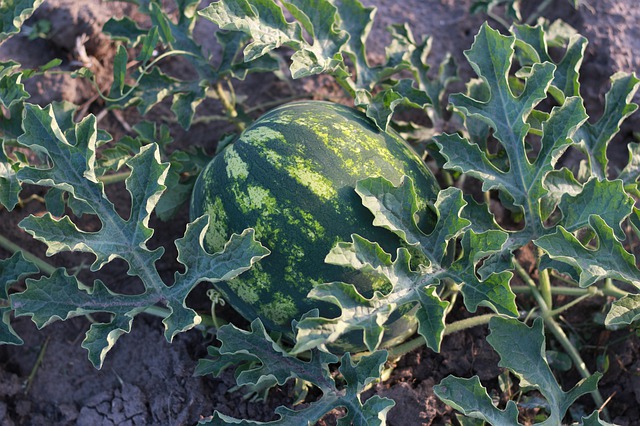
There are a few diseases that you should be watching out for when growing watermelons. Some of them are very common general garden diseases, while others are more specific to watermelons. Be on the lookout for these and be ready to treat them should they appear.
Anthracnose
Anthracnose is a fungus that often is carried by the seeds of plants, meaning they can be infected before you even plant them. To help with this, you can soak the watermelon seeds in 120-degree water for about 20 minutes before planting to kill off the fungus.
At first, anthracnose just appears as small spots on leaves or fruits. Over time, though, these spots expand, turn black or gray, and can cause sunken areas on the watermelons. Spraying watermelon plants with horticultural neem oil can help kill the fungus, as well as rotating planting locations to prevent future infection.
Downy Mildew
Downy mildew only attacks the watermelon leaves, but it can still be damaging as it weakens the plant, leading to lower yields. It appears as yellow spots on the leaves which will turn brown, with purple spores on the underside. As before, neem oil can really help control this infection.
Powdery Mildew
Powdery mildew also affects the watermelon plant leaves, and can severely weaken plants. It will leave a powdery white substance on the leaves, which will eventually wilt and die. Neem oil can be effective, but so can increasing circulation around your watermelons. You can also use a DIY Milk Spray like this one which acts as natural fungicide.
Bacterial Fruit Blotch
Bacterial fruit blotch affects young watermelon plants often, but can affect older ones too. It causes water-soaked spots that spread and become necrotic. The rinds might also split and ooze a sticky yellow liquid. Apply an organic copper fungicide like this one as soon as symptoms appear.
Gummy Stem Blight
Lastly, gummy stem blight causes black, wrinkled spots on leaves, as well as dark and sunken areas on the stems and watermelons. In humid conditions, the watermelon plant can collapse and die very quickly. Again, treat with organic copper fungicide as soon as symptoms appear.
If other treatment methods fail, the best thing to do for diseased watermelons is to remove the diseased parts as quickly as possible. This can also mean removing entire plants if necessary. You don’t want to let the disease spread to other parts of your garden.
Pests Can Cause Watermelon Plants to Die
As with diseases, there are some important pests to think about. Some of them are very common garden pests, while others are found more often with watermelons.
Aphids
Aphids are a very common pest that gardeners despise. They’re tiny, come in many colors, and can do a lot of damage to watermelons. They will eat the watermelon leaves, leaving small discolored spots, as well as a sticky substance that can attract other pests. Luckily, aphids can be gotten rid of without chemicals. Spraying down the plant is sometimes enough to get rid of aphids, but you can also use a spray made with horticultural neem oil like this one.
Spider Mites
Spider mites are another very common pest to attack watermelon plants. They cause small yellow spots to appear on watermelon leaves where they feed. They also spin small, thin webs, which makes their presence easy to identify. Spray with neem oil regularly until the watermelons are healthy again.
Cucumber Beetles
Cucumber beetles feed openly on watermelon leaves and flowers, causing holes to be left behind. For mature watermelon plants that have already fruited, this usually isn’t too bad. But for younger watermelon plants, it can be a problem, especially if the beetles are eating the flowers. In this case, try spraying with neem oil, and remove any beetles you see by hand.
Leaf Miners
Leaf miners, as their name suggests, like feeding on and digging through watermelon leaves. This will cause white streaks on leaves, and sometimes white splotches. Luckily, they don’t usually harm watermelon plants by doing this. If it bothers you, though, you can always remove the affected leaves.
Final Thoughts
Finding the cause of your watermelon plant dying and then acting quickly to fix the problem can provide you with a thriving watermelon plant. And just in case you’re needing some inspiration to fix your watermelon plant growing problems, below is a photo of a delicious and healthy watermelon. Here’s to a successful growing season!
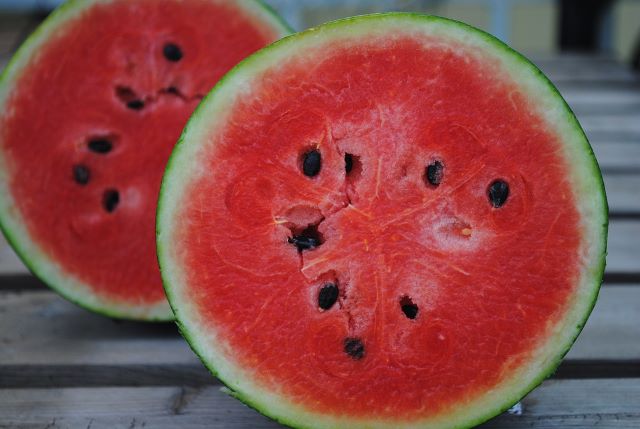
Related reading:
- How to Grow Watermelons: Planting, Caring and Harvesting Watermelons
- Watermelon Flowers But No Fruit? Causes and Solutions
- Why Are My Watermelons Not Ripening? With Solutions!
- Easy Watermelon Salad Recipe with Feta, Mint, Balsamic
- Why Is My Watermelon Bitter? Answered!
- Kiwano Melon: Grow African Horned Melon and Eat the Fruit
- Growing Cucamelons: Planting, Caring and Harvesting Cucamelon
- Cantaloupe Flowering But No Fruit? Causes And Solutions
